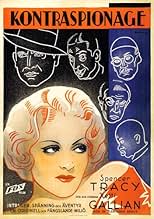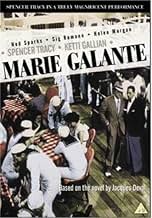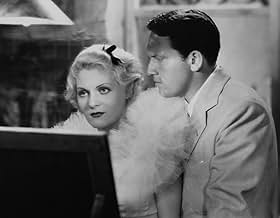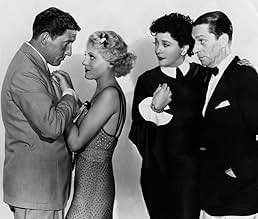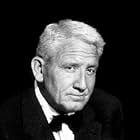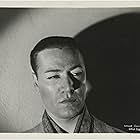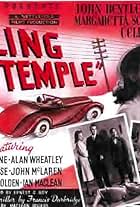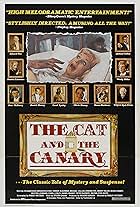In the early 1930s Fox Studios went from extreme commercial and critical success with hits like State Fair and Best Picture winner Cavalcade, to being among the most heavily indebted production companies, and was one of the first to go into receivership. The release of Marie Galante in 1934 came from a studio in a state of panic, and is one of many curious little pieces from the era.
Marie Galante was directed by Henry King, one of the longest-serving and most respected men at Fox. This picture finds him at his most baroque and artistically European in style. During the opening scenes the camera tracks along following Ketti Gallian through a number of settings, but she is back amid the clutter of the sets. This draws our attention to the star, but gives us the feeling of voyeurs stood outside the action. Later, in the office where we first meet Spencer Tracy and the other secret service people, a huge whirring fan and its shadow dominate every shot. It's not only a reminder of the oppressive heat, but touches like this give the environment a character of its own. The only time we are totally focused on the actors it is via gritty close-ups. There were only a handful of directors in Hollywood during this era who were giving such prominence to the sets, but they were mostly Germans like Fritz Lang and Josef von Sternberg.
Appropriately enough for this European flavouring, the star of Marie Galante is a French woman. Ketti Gallian's looks and some extent her mannerisms make her appear as another Marlene Dietrich, and this is probably why the studio snapped her up. Compared to the German siren though she is a somewhat bland, and makes a rather weak and forgettable heroine. Spencer Tracey, his star on the ascendant, provides a steady and realistic performance, but he seems just a little constrained by this rather stolid role. Amid all the stark sets and quirky angles, resolutely American character players Ned Sparks and Stepin Fetchit seem strangely out of place, although sensibly their roles have not been emphasised too much, and they at least give the picture its only flashes of warmth and humour.
Marie Galante is a strange little picture and the way it is made is even stranger. The plot points don't seem directed towards the audience. Instead, understanding it is like watching a group of people across a restaurant and trying to piece together their relationships. It's not that it's difficult to follow, just that doing so is a slightly cold and alienating experience. It does look incredibly neat and stylish, and is vaguely interesting simply for the oddity that it is, but the sense of vitality and connection that 30s Hollywood usually offered is sadly missing.

